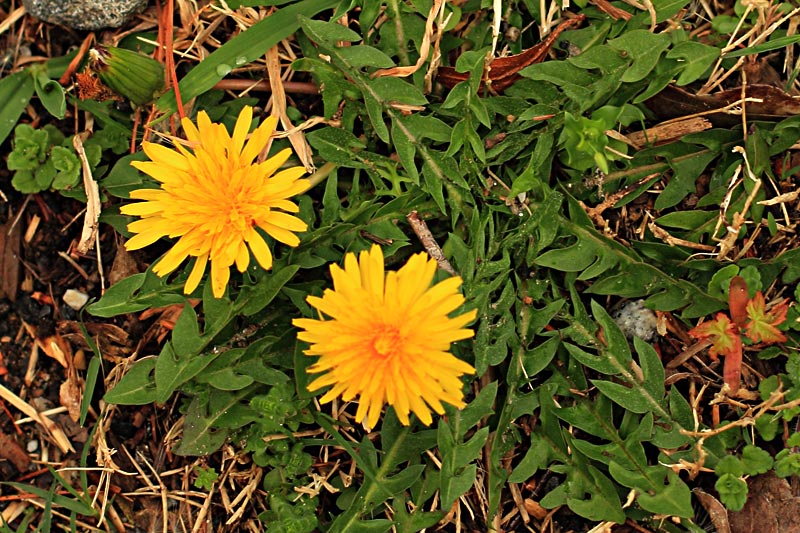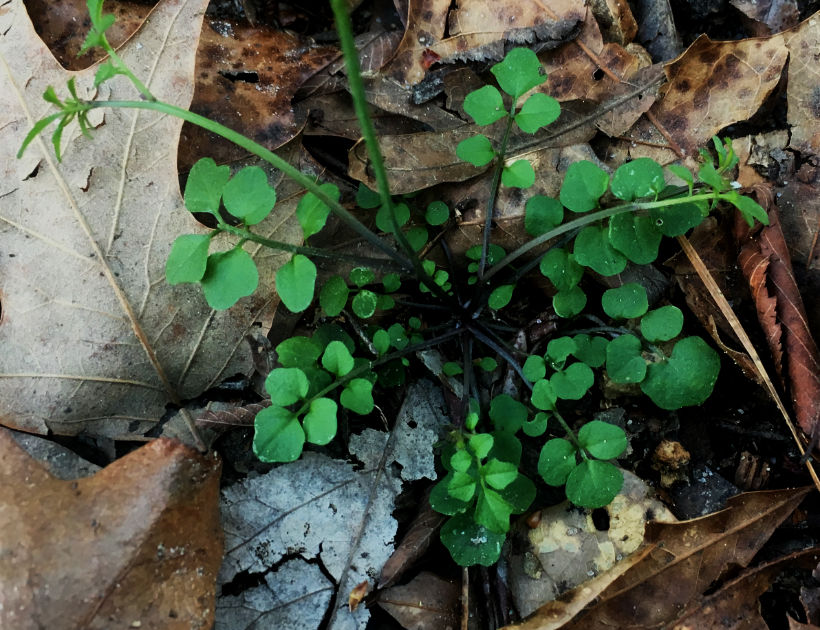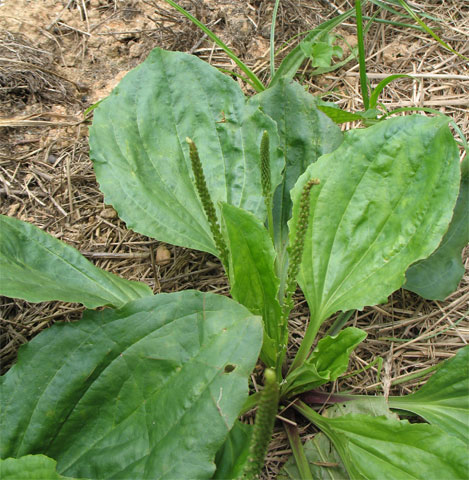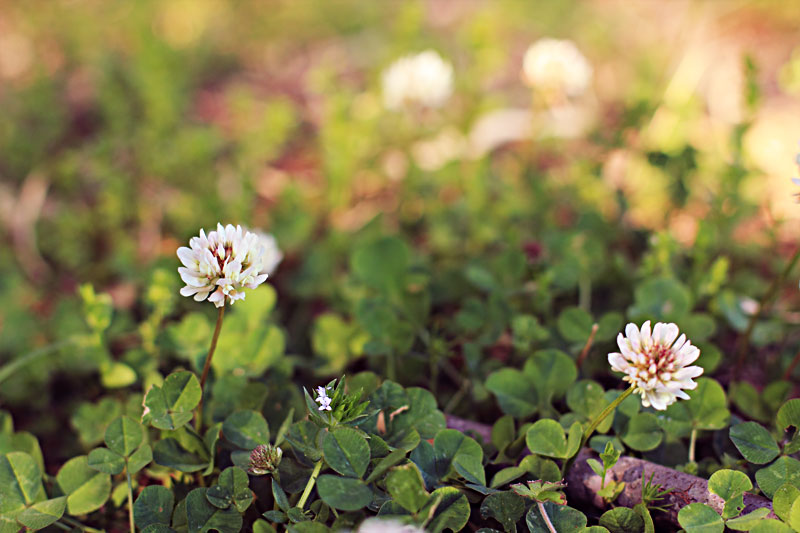
Foraging for wild food is a great way to experience the natural world and connect with something ancient and primal within ourselves.
And in many ways, it can be a more healthy alternative to the assembly line foods we find at the grocery store.
Not only is wild food much richer in essential vitamins and minerals, but foraging also provides much needed exercise. It's a combination of hiking and gardening.
Before diving into the salad bowl that surrounds us, it's a good idea to be aware of some basic guidelines that will ensure that foraging remains safe and sustainable.
Proper Identification of Wild Edibles
Before eating any wild plant, make 100% sure it's not poisonous.
Find a mentor. Learning from an expert or someone more experienced will give you a higher level of confidence.
Get a Good Book. There’s no substitute for a mentor, but a good field guide is a close second. A reference book will give you confidence as you get more comfortable with foraging. You can use it not only to help positively identify plants, but a book is also great for learning new plants in your area -- plants that you haven’t found yet. It provides inspiration to seek out new wild edibles in new places.
When choosing a field guide, look for a book with a broad range of plants in your area. It should have easy-to-identify photos or line-drawings and should include info on habitat and palatability. There are plenty of books that describe “edible” wild plants that no one would eat unless they were desperate. It’s helpful to know what you’re looking for is worth finding.
There are a lot of great guides out there now, but there are three books that I recommend for getting started:
For a more extensive list, check out our favorite foraging books.
Learn the few dangerous species in your area before venturing into the wild to forage. If you know what poisonous plants you may encounter, you'll feel more comfortable foraging for the edible species.
Don't always rely on common names. Common names can refer to several different plants. Some wild edible plants share the same common names as poisonous plants. Latin names are more reliable. For example, if someone offers you hemlock tea, before drinking, you might ask whether it's infused with Conium maculatum (Poison Hemlock) or with the tender tips of Tsuga canadensis (Eastern Hemlock tree). Latin was chosen to classify plants and animals because it's a dead language, so we can't expect it to evolve or change, whereas common names vary and fluctuate.
Use all of your senses. Don't limit yourself to visual ID alone. Lots of wild edible plants have look-alikes. Learn how to differentiate similar plants by smell, feel, texture, etc. It's not a rule, but in many cases, poisonous plants are unpalatable and rank smelling. That said, taste should only be used if you're absolutely sure the plant is not poisonous. Some plants, such as water hemlock, are deadly in very small doses.
Learn habitat. You won't find cattails on a high slope, and you won't find ramps in a swamp.
Learn companion plants. Many plants are commonly found growing nearby certain other species. If you see yellow dock, there's a good chance pokeweed will be close by.
Learn to follow wild edible plants through all seasons. This is important for two reasons. First is positive identification. When I was learning to forage, I misidentified the poisonous white snakeroot as wood nettle. I put the leaves in soup for a few months. Fortunately I only added it in small quantities and no one got sick. When it bloomed in July, it became clear to me that I had made a mistake. There are admittedly other subtleties of differentiation that I should have noticed, but the flowers were a dead giveaway.
Another reason to follow wild edible plants through the seasons is to locate perennial plants that you want to harvest in early spring. For example, by the time pokeweed becomes identifiable, it's often past the point of use. If you make note of it during the warmer months, you'll know where to find it when it first appears in spring.
Learn which parts of a wild edible plant are safe to use. Just because a wild plant is considered edible doesn't mean all parts are edible. For instance, while ripe cooked elderberries are safe to eat, the bark, stems and roots are considered poisonous. It's also important to note that some plants are only edible at certain times of the year. For example, stinging nettle shouldn't be used after it goes to seed.
Keep a foraging journal. This is really important for developing a sense of what is available in your area when. Through months and years of recording your foraging finds, you'll gradually compile a calendar that tells you what's on the horizon for harvesting. This will also help you plan a menu schedule ahead of time.
 From left: Autumn olives, chestnuts, Kousa dogwood fruit, black walnuts, hickory nut, butternuts, sumac
From left: Autumn olives, chestnuts, Kousa dogwood fruit, black walnuts, hickory nut, butternuts, sumac
Sustainability
Don't over harvest. Every population is limited. Even where wild edible plants occur in large numbers, the colony should be respected. Try to collect no more than 10% (or less depending on how much foraging pressure the area receives). And of course never collect any more than you will actually use.
Avoid foraging rare and protected wild edible plants. Many plants may be locally abundant but are rare throughout their ranges.
Only collect the part of the plant that you plan to use. If you're going to make file powder from sassafras leaves, there's no need to uproot the sapling. Just take what you need and leave enough to ensure that the plant will continue to thrive. A good rule of thumb is to harvest no more than 25% of a plant if you don't need the whole plant.
Consider cultivating wild edible plants in your garden. Many wild plants that are edible are easy to transplant and propagate. Ramps, for instance, are getting scarcer due to over harvest, but can be cultivated given the right conditions. Take the time to research growing conditions of rare plants in your area. There is a great resurgence of interest in foraging wild edible and medicinal plants. That coupled with diminishing habitat puts tremendous pressure on wild plant populations. This puts the responsibility of preservation on us.
Safety
Avoid toxic areas. Never forage for wild edible plants near busy roads. Most plants absorb lead and other heavy metals from toxic exhaust. And these toxins tend to settle in the soil even if the traffic no longer exists. Also avoid areas that are or have been sprayed with pesticides.
Know what part of the plant is safe in what season. This was listed above, but it merits mentioning again.
When foraging wild water plants, know the water source. This is especially important if you're planning to eat the wild edible raw. Eating plants that have grown in contaminated water is the same as drinking contaminated water. Chemical and heavy metal pollution are also concerns that can't be removed by cooking.
Only forage plants that appear to be healthy. Plants can be afflicted by disease, fungi, pests or pollution. Harvesting healthy plants minimizes the risk of illness and also means you're getting more nutritious food.
Get permission to forage. This may not be an obvious safety issue, but around here, not respecting property rights and laws could result in some pretty unpleasant consequences. It's also a matter of courtesy.
Start With Common Edible Weeds & Mushrooms
Start with edibles that are easy to identify and easy to find. If you're interested in fungi, try looking for chanterelles mushrooms. Given the right season and condition, they're abundant and easy to differentiate from non-edible lookalikes.
For easy-to-find wild edible plants, a great place to look is your yard! Here are a few that are common in areas like lawns, parks and other suburban habitats where weeds thrive:
Dandelion

Common dandelions have long been eaten as a nutritious weed and are often cultivated as a commercially available vegetable. Harvest the younger leaves and eat them raw or cooked. All parts of the dandelion are edible: leaves, flowers, and roots.
Read more about the common dandelion.
Wild onion

Wild onion and wild garlic look very similar and can be used interchangeably the same way you would use store-bought green onions or scallions. Look for them in clumps throughout lawns, standing taller than the other weeds and grass. Make sure it smells and tastes oniony, as there are toxic lookalikes.
Chickweed

Chickweed is a great introduction to wild foods because it's so tasty and nutritious. Look for it in cooler seasons in nitrogen-rich soils like gardens.
Read more about chickweed.
Hairy bittercress

Hairy bittercress is also a delicious cooler weather wild edible that is commonly found in disburbed areas like lawns.
Read more about hairy bittercress.
Plantain (Plantago)

Plantain (or its Latin name Plantago) is not as tasty as some of the other yard weeds, but it's so plentiful, nutritious, and easy to identify, it's worth a forage! Look for the younger, more tender leaves.
It's better as a cooked green than raw and makes a decent spinach substitute, as well as a healthful tea. The seed husks, commonly known as "psyllium husks," are sold commercially as a dietary fiber supplement.
Read more about Plantago.
Violets

Common violets, both leaves and flowers, make an excellent salad ingredient! The flavor of the leaves is pleasantly mild, while the flowers are slightly sweet. The leaves also make an excellent cooked green.
Clover

The fresh flowers of clover make an excellent, mildly sweet tea. I prefer white to red, but both can be used. Avoid picking clover blossoms with wilted brown petals. The flowers can be used fresh or dried, but be aware that clover flowers grown in tropical areas and fermented clover flowers can be toxic so avoid both. Clover is allergenic to some people, so start with a small amount if you're not sure.
Check out this foraging reference for an extenstive list of wild edibles to whet your appetite.
Improve your skills
The more you forage, the more proficient you'll become. Try to learn a new wild edible plant each time you go foraging. With each new plant, study all of its uses including medicinal. You'll become more and more comfortable with the natural world and all it has to offer as you broaden your catalog of useful wild plants.
Happy foraging!